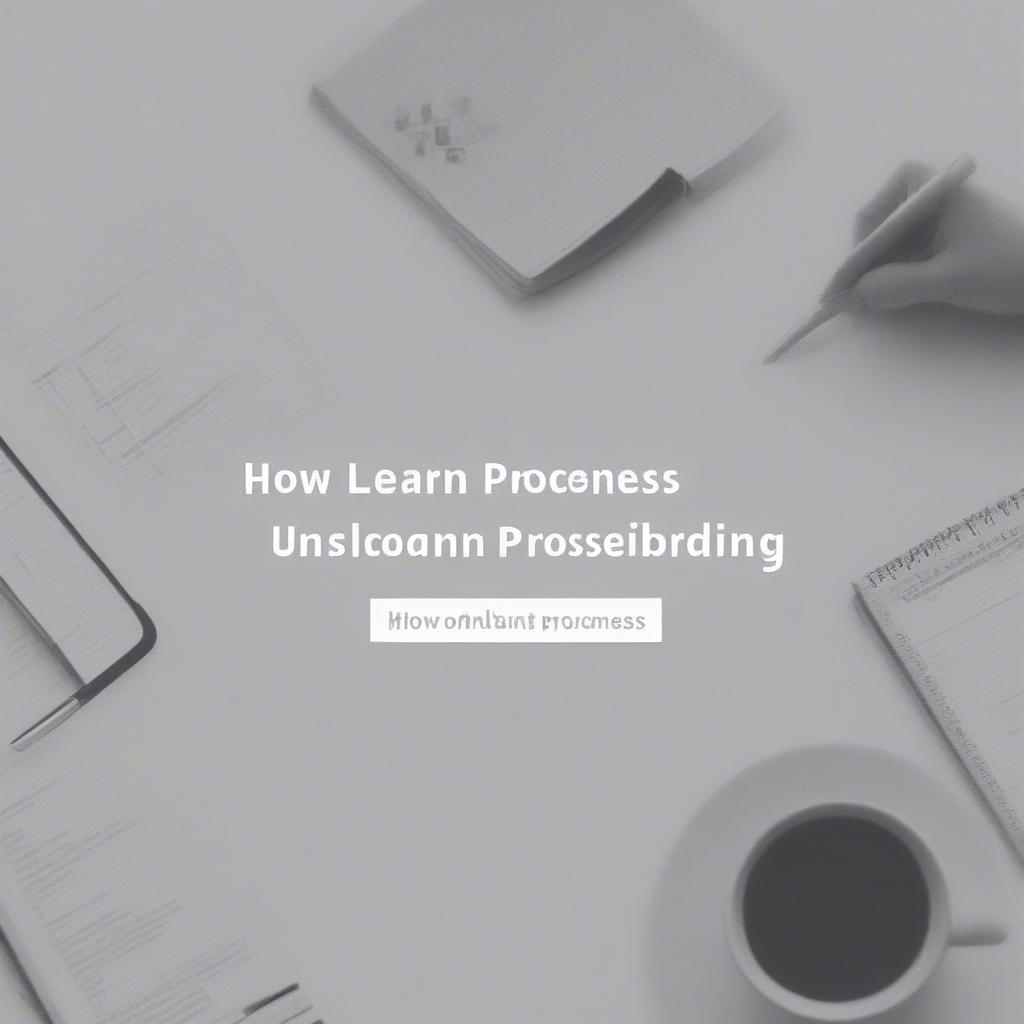
Landing a new client is exhilarating! But the real magic happens after the contract is signed. That’s where a robust client onboarding process comes in. It’s more than just paperwork; it’s about setting the stage for a successful, long-term relationship. Think of it as laying the foundation for a beautiful, collaborative building – the project. A well-defined client onboarding process ensures that you, as a freelancer, and your client are on the same page from the get-go, leading to fewer headaches and happier collaborations.
Why is Client Onboarding So Crucial?
Before diving into the ‘how,’ let’s understand the ‘why.’ Why dedicate time to crafting an effective client onboarding process when you could jump straight into the project?
Setting Expectations Right from the Start
Clarity is key. A structured client onboarding process clarifies roles, responsibilities, and communication protocols. It sets the tone for your professional relationship and eliminates potential confusion down the line. Imagine a client who expects daily updates versus you who prefer weekly summaries; proper onboarding avoids this mismatch. This ensures that everyone’s on the same page, understanding the freelance workflow, thereby reducing frustration and disputes later in the project.
Building Trust and Confidence
First impressions matter. A smooth, organized onboarding experience demonstrates your professionalism and commitment to a positive working relationship. It shows your client that you’re serious about their project and that they’ve made the right choice by hiring you. This cultivates trust from day one, fostering a stronger, more collaborative partnership. When you clearly explain your freelance workflow, it builds confidence in your abilities.
Streamlining the Project Kick-off
A good onboarding process streamlines the project’s beginning, ensuring you have all the necessary information, resources, and approvals before diving in. This saves valuable time and prevents unnecessary back-and-forths during the project’s crucial initial phases. The objective is to prevent delays by ensuring the smooth transitions from contract to project initiation.
Enhancing Client Satisfaction and Retention
Clients who experience a seamless onboarding process are more likely to be satisfied with your services and become repeat customers. Happy clients are also more likely to recommend you to others, expanding your network and boosting your freelance business. The smoother the client onboarding, the happier the client, and the more likely they are to engage with your work again.
Key Elements of an Effective Client Onboarding Process
Creating an effective client onboarding process is about identifying the critical touchpoints in the initial stages of a client relationship. Here’s a breakdown of the key elements:
1. Welcome Package: The First Impression
This is your client’s first real experience after signing the contract. Make it count! A well-crafted welcome package can include:
- A Welcome Email: Express your excitement about the collaboration. Reiterate the project scope and key timelines.
- Client Welcome Guide: This document should detail your freelance workflow, the steps involved in your onboarding process, your communication policies, and your expected response times. Think of it as an instruction manual for collaborating with you.
- Project Kick-off Checklist: A checklist of the information or assets you need from the client to kick off the project (e.g., access to platforms, brand guidelines, specific goals).
- Contact Information: Include all relevant contact details, including your email, phone number, and preferred communication methods.
- Welcome Video: A short video is a personal touch that allows you to connect with the client on a more human level and is particularly helpful in explaining your client onboarding process.
2. Initial Discovery Call: Setting the Stage
The initial discovery call (or a kickoff meeting) is a crucial step in understanding the client’s needs and expectations. Here’s what you should cover:
- Project Goals and Objectives: Reiterate the project’s goals and ensure you and the client are on the same page. Discuss success metrics to measure the project’s success.
- Target Audience and Brand: Confirm you have a thorough understanding of the client’s target audience and brand guidelines to ensure your work resonates.
- Communication Preferences: Discuss preferred communication channels (e.g., email, Slack, phone calls) and your expected response times to help ensure smooth transitions.
- Timeline and Milestones: Review the project timeline and establish clear milestones for progress tracking.
- Feedback Process: Clarify how you’ll gather feedback and how revisions will be handled during the project.
- Q&A Session: Allow ample time for the client to ask questions, ensuring they feel comfortable and informed about the project process.
3. Contract and Payment: Ensuring Clarity
While you might have already covered the basics during the initial proposal, reviewing these details again during onboarding can prevent misunderstandings.
- Detailed Contract: Make sure the contract is clear, legally sound, and covers all aspects of the project.
- Payment Terms: Clearly outline your payment schedule, preferred methods, and any late payment penalties to ensure smooth transitions through your freelance workflow.
- Invoicing Process: Explain how and when you will send invoices.
4. Access and Tools: Getting Equipped
Ensuring you have all necessary access and resources will prevent project delays.
- Gather Assets: Collect necessary brand assets, login credentials, access to platforms, and any other tools you need to start the project.
- Establish Secure File Sharing: Determine how you’ll securely exchange documents and project files.
- Tool Introduction: If you use specific project management or collaboration tools, provide tutorials or brief explanations to help the client navigate them.
5. Regular Check-ins: Staying Connected
Maintain open communication with regular check-ins. This can be weekly or bi-weekly, depending on the project scope.
- Progress Updates: Provide updates on your progress and highlight any key achievements.
- Feedback Solicitation: Actively ask for feedback on your work to ensure you’re meeting their expectations.
- Address Concerns Promptly: If concerns arise, address them quickly and transparently to maintain a positive client relationship. This ensures a smooth transitions from milestone to milestone.
6. Offboarding: The Final Step
Even the end of a project requires a well-structured approach to solidify the relationship and prepare for potential future engagements.
- Project Wrap-up: Deliver all final deliverables and conduct a thorough review of the project.
- Feedback Collection: Gather feedback from the client about the entire collaboration, not just the final product. This is vital for improving your client onboarding processes.
- Testimonials and Referrals: Politely ask for a testimonial or referral if the client is satisfied with your work.
- Follow-up Opportunities: Express interest in collaborating on future projects, keeping the door open for continued engagement.
Creating Your Own Client Onboarding Process: Step-by-Step Guide
Ready to implement these steps? Here’s a practical guide to creating your own client onboarding process:
Step 1: Map Your Current Process
Before you improve, understand where you currently stand.
- Document your existing workflow: Identify every step from initial contact to project kickoff.
- Identify Pain Points: Pinpoint areas where the process is inefficient, confusing, or time-consuming.
- Gather Feedback: Ask clients for feedback on their onboarding experience.
Step 2: Develop Your Ideal Onboarding Workflow
This is where you design your ideal client journey.
- Outline your key touchpoints: From welcome email to project kickoff and beyond.
- Create Templates: Develop templates for your welcome email, project kick-off checklist, contract, and other recurring tasks.
- Choose your Tools: Select software for task management, project collaboration, and file sharing.
- Determine the sequence of steps: Decide the order in which you’ll execute your onboarding tasks to ensure smooth transitions.
Step 3: Implement and Automate
Once your workflow is mapped, put it into action.
- Set up automation: Use tools to automate tasks like welcome emails, follow-ups, and invoices.
- Create a client onboarding portal: Consider creating a portal or using project management software to house all relevant information for the client.
- Test Your Process: Before fully implementing your new process, test it with a small group of clients. This helps identify and address any potential issues before widespread implementation.
Step 4: Monitor, Evaluate and Iterate
Continuously review your process and improve it.
- Track Key Metrics: Monitor metrics like client satisfaction scores, time spent on onboarding tasks, and project completion rates.
- Gather Feedback: Continuously solicit feedback from clients about their onboarding experience.
- Refine Your Workflow: Make necessary adjustments based on the data you collect and the feedback you receive.
Example Client Onboarding Process for a Freelance Writer
Here’s a practical example of a client onboarding process for a freelance writer:
- Welcome Email: Immediately after the contract is signed, send a personalized email thanking the client for their business. Attach a welcome guide that outlines the writer’s typical freelance workflow, project expectations, and preferred communication methods.
- Project Discovery Call: Schedule a 30-60 minute discovery call to delve into the client’s specific needs, target audience, and brand voice. Discuss key deadlines and project milestones.
- Asset Collection: Request necessary assets like brand guidelines, style guides, and access to any relevant platforms.
- Contract Review: Briefly review payment terms and the agreed scope.
- First Draft Delivery: Provide a first draft by the agreed date and schedule a follow-up call to gather feedback.
- Revision Rounds: Handle revisions based on feedback and incorporate them to deliver a final product.
- Project Delivery and Wrap-up: Deliver the final copy, summarize the project’s achievements, and ask for a testimonial.
Tools to Streamline Your Client Onboarding
Leveraging the right tools can significantly streamline your client onboarding process. Here are some recommendations:
- Project Management: Asana, Trello, Monday.com
- CRM (Client Relationship Management): HubSpot, Zoho CRM, Pipedrive
- Email Marketing: Mailchimp, ConvertKit
- Document Management: Google Drive, Dropbox
- File Sharing: WeTransfer, ShareFile
- Communication: Slack, Zoom, Microsoft Teams
- Invoicing: FreshBooks, Xero, Quickbooks
Common Mistakes to Avoid
Even with careful planning, some common pitfalls can hinder your client onboarding process. Here are a few mistakes to avoid:
- Lack of Clarity: Ambiguity creates confusion and can lead to frustration. Be clear and concise in all communications.
- Ignoring Client Needs: Onboarding is not a one-size-fits-all process. Take the time to understand each client’s specific needs and tailor your approach.
- Over-complication: Keep the process streamlined and easy to follow. Avoid unnecessary steps or jargon.
- Poor Communication: Regular and transparent communication is key. Keep clients informed and address their concerns promptly.
- Rushing the Process: Don’t be tempted to cut corners. Take the time to ensure everything is set up correctly for a successful project.
How Learn Business Supports Your Business
At Learn Business, we understand the challenges freelancers face. We’re dedicated to supporting your growth by providing practical guidance and resources that are tailored for your business. Whether you need help creating robust systems, understanding legal frameworks, or boosting your marketing efforts, we’ve got you covered.
Learn Business offers:
- Detailed Templates: Use our ready-to-go templates for contracts, invoices, welcome packages, and more. These templates can help you build a solid foundation for your business and can enhance your client onboarding process to achieve smooth transitions.
- Expert Advice: Get direct access to expert advice on various business topics, ensuring that you have the tools needed for success.
- Tailored Guidance: We understand that every business is unique, that’s why we offer guidance tailored to your specific situation.
- Practical Resources: We provide actionable resources and tools to support your journey, enabling you to streamline your operations and provide a professional client experience by implementing a great freelance workflow.
By leveraging Learn Business’s resources, you can streamline your business, improve your processes and elevate your interactions with clients, leading to long-term growth. We equip you with everything you need to make your business thrive by improving your client onboarding and enabling you to create smooth transitions for every project.
Final Thoughts
Crafting a well-defined client onboarding process is an investment that pays dividends. It not only ensures that projects start on the right foot but also builds stronger, more trusting relationships with your clients. By implementing the steps outlined in this guide, you can ensure smooth transitions, enhance client satisfaction, and ultimately grow your freelance business. Remember, the time you spend on perfecting your client onboarding process is an investment in the long-term success of your freelance career. It’s the key to turning first-time clients into raving fans who will continue to partner with you for years to come. Embrace the journey and reap the rewards of a structured and efficient freelance workflow.



Leave a Reply